Learn more about our appointment options, get a second opinion, find a convenient location, request a referral, and get additional support resources.

AHN Aortic Disease Program
The AHN Aortic Disease Program offers coordinated care from a team specializing in conditions affecting the aorta, including aortic dissection or aneurysm.
We have the experience and knowledge required to treat all types of aortic disease. From using medical therapies for simple and straightforward cases to the most advanced and cutting-edge treatments for complex disease, our program provides tailored, comprehensive treatment for each patient.
Genetics and aortic disease risk
Some genetic syndromes and inherited conditions can increase your risk for aortic diseases. Patients diagnosed with aortic aneurysms often find they have a close relative with a similar disease. You can ask your doctor to perform tests that determine your risk for aortic disease based on your family history.
Comprehensive care for aortic disease
The AHN Aortic Disease Program tailors care to your unique situation, from an entire team of doctors including radiologists, aortic pathologists, geneticists, cardiologists, cardiac surgeons and vascular surgeons.
Our highly experienced specialists work quickly to determine the best way to treat aneurysms and monitor those at an increased risk for aortic diseases, including those with:
-
Appointments
Aortic Disease Program
- Connective tissue disorders like Ehlers-Danlos syndrome, Marfan syndrome, and Loeys-Dietz syndrome.
- Genetic conditions like Turner syndrome.
- A family history of aortic disease or connective tissue disorders.
The aorta is the largest blood vessel inside your body, carrying blood from your heart to the rest of the body. When you have aortic disease, the aorta is either damaged or doesn’t work properly.
What is aortic disease?
Aortic disease is one of the most common forms of cardiovascular disease. There are a variety of conditions that can affect the strength of the aortic artery or damage it.
If the aorta gets larger in one spot, a bulge forms. This is called an aortic aneurysm. Aneurysms are weaker than the normal blood vessel wall and can get bigger, tear, or burst. A burst or tear can often require emergency surgery.
Types of aortic disease we treat
Aortic aneurysm (Enlarged aorta)
An aortic aneurysm is a balloon-like bulge in the aorta. This can happen in two different places.
- Abdominal aortic aneurysms are the most common and are caused by increased blood pressure. They happen in the section of the aorta that passes through your abdomen.
- Thoracic aortic aneurysms develop in the part of the aorta that passes through your chest.
Aortic dissection (Torn aorta)
An aortic dissection is a tear in the inner layer of the aorta. This causes blood to rush through the opening and split the aorta.
Learn more about aortic disease, including how to spot symptoms and how aortic disease is treated.
Aortic disease treatment
You can get advanced diagnostic imaging and meet with the appropriate specialists all in one visit. After that, our team develops your personalized management and treatment plan, which we explain to you in detail. We also provide information about your aortic disease and treatment plan that you can share with your family or caregivers.
While you can often manage early-stage aortic disease with lifestyle changes, therapy, and medication, later-stage aortic disease treatment usually involves surgery like:
- Endovascular surgery.
- Hybrid aortic repair.
- Hypothermic circulatory arrest.
- Open aortic repair.
Our team will recommend treatment options based on your unique needs. Surgical treatment options for aortic disease can range from open surgery to minimally invasive, stent-based therapies. We’ll use the most advanced treatment available to minimize discomfort and length of your hospital stay.
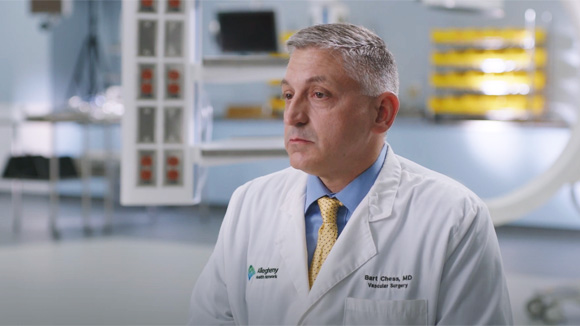
"Stent grafts can be done under local anesthesia with some sedation, in one of our hybrid rooms which has state-of-the-art imaging."
Bart Chess, MD — Vascular Surgery
By accessing this video, I understand that I am leaving the AHN website and I will be re-directed to an external website operated by a third party platform provider. I acknowledge that the platform provider may collect personal information about me, and about the video that I view, on their platform and may use and disclose this information in accordance with its privacy policy. I agree that Allegheny Health Network is not responsible for the data collection and use practices of this third party.
AHN Aortic Disease Program specialists
Our team of aortic disease specialists includes cardiac and vascular surgeons, aortic pathologists, cardiologists, and radiologists. We use the most advanced technologies to identify aortic disease as well as the latest techniques and methods to treat it.
Our team of specialists is led by:

Surgical Director of Aortic Center
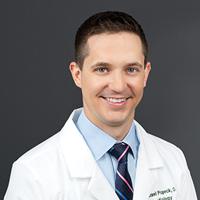
Medical Director of Aortic Center
And includes:
Radiologists
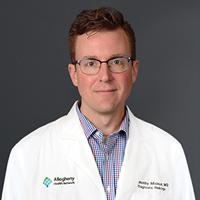
Radiologist

Radiologist
Cardiac and Vascular Surgeons
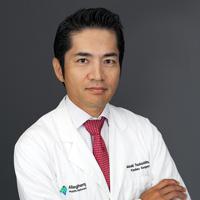
Cardiac Surgeon
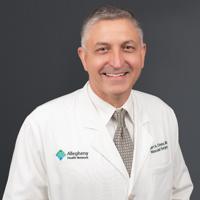
Vascular Surgeon

Vascular Surgeon
Program Coordinator
Kileigh Barnes, RN
Working with our cardiologists
All AHN cardiologists are part of the Aortic Disease program. This means your cardiologist will continue to be a part of your care team from your first appointment through diagnosis and treatment for aortic disease.
If your cardiologist is not associated with AHN, he or she can still refer you to this program for diagnosis and treatment. Once you are referred, your cardiologist will continue to be involved in your care for aortic disease.
If you don’t have a cardiologist but are concerned about your risk for developing aortic disease, you can find an AHN cardiologist near you and schedule an appointment to talk through your options.
Aortic disease appointment scheduling options
Knowing who to call to make the correct appointment depends on whether you have a current aortic disease diagnosis. The AHN Aortic Disease Program offers the following appointment scheduling options for:
Those not diagnosed with aortic disease
If you do not have a current aortic disease diagnosis but are concerned about your risk factors due to family history or other health issues, you can make an appointment with a general cardiologist to talk about your concerns and next steps.
To get started, call (412) DOCTORS (412) 362-8677 to schedule your appointment.
You can also find an AHN cardiologist near you and schedule an appointment to talk through your options.
Those with a referral for diagnostic testing
If you have a referral to schedule a diagnostic test or procedure, you can contact the location that is most convenient to you to schedule. We perform diagnostic testing and procedures for aortic disease at four locations across western Pennsylvania:
Allegheny General Hospital
320 East North Avenue
Pittsburgh, PA 15212
GET DIRECTIONS
Forbes Hospital
2570 Haymaker Road
Monroeville, PA 15146
GET DIRECTIONS
Jefferson Hospital
565 Coal Valley Road
Jefferson Hills, PA 15025
GET DIRECTIONS
Saint Vincent Hospital
232 West 25th Street
Erie, PA 16544
GET DIRECTIONS
Those diagnosed with aortic disease or looking for a second opinion
If you already have an aortic disease diagnosis or are looking for a second opinion from an AHN cardiologist, you can schedule an appointment with our Aortic Disease Program by calling our program coordinator at (412) 442-7650 or email aorta@ahn.org.
What to expect at your first appointment
When you schedule an appointment with the Aortic Disease Program, our nurses will talk with you about any additional testing that you may need. If you need imaging on the day of your appointment, your doctor may have you go to radiologist or echocardiology beforehand to get scans of your heart and aortic valve.
At your first appointment, your care team will:
- Thoroughly review your medical history.
- Order advanced imaging to diagnose, monitor, and determine how complex your condition is.
- Develop a personalized care plan that addresses your specific condition and personal goals.
- Discuss long-term management plans for ongoing care. This includes providing information on genetic testing, counseling, and imaging for family members, so we can track any inherited conditions carefully.
If your condition is complex or you will need surgical treatment, you’ll benefit from all our specialists weighing in on your proposed treatment plan to decide the next best course of action.
At every appointment, your care team will use the most advanced technology and treatment options available, incorporating ongoing research from clinical trials and continuing education from our specialists.
AHN Cardiovascular Research Institute
The AHN Cardiovascular Research Institute is established on more than 100 years of innovation with diverse areas of focus, including research for the latest heart disease treatments and cardiac technology. Our qualified team and aortic disease specialists take pride in using state-of-the-art devices, technology, and therapies to help revolutionize care for cardiovascular disease.
What is a clinical trial?
Clinical trials are special research opportunities that explore medical treatments, strategies, or devices to ensure they’re safe and effective for human use.
Active cardiovascular clinical trials
By prioritizing research and innovation, our physicians and patients are engaged in more than 100 national and international clinical trials. Participating in these trials gives AHN patients special access to some of the newest potential treatment options for cardiovascular disease and aortic disease. Participation in clinical trials is based on meeting eligibility criteria.
To express interest in a clinical trial or to learn more about research opportunities, check out our active cardiovascular clinical trials.
If you are not associated with AHN and would like to refer your patient to an AHN Cardiovascular Institute specialist, you can do so by using AHN Find Care or AHN Physician Access.
How to refer your patient to the AHN Cardiovascular Institute
- Find the specialist you’re looking for and the most convenient location for your patient. Then, request an appointment for your patient directly from the doctor’s profile on Find Care, providing relevant patient details.
- Call Physician Access at (844) MD-REFER (844) 637-3337, to refer your patient to an AHN Cardiovascular Institute specialist, and schedule an appointment.
If you have any questions about independent physician referral, see our frequently asked questions and answers.
After referring your patient
Once your patient is receiving care from an AHN specialist, you can view their test results, see their treatment plan, follow their treatment progress, and collaborate with our team using the EpicCare® Link™ platform.
If you are new to EpicCare Link, or need to request your own EpicCare Link account, read: EpicCare Link for Patient Follow-up, for new account request forms and active account FAQs.
Releasing medical records to EpicCare Link
If you can’t access your patient's AHN test results through the EpicCare Link platform, your patient will need to complete and submit the correct AHN Medical Records Release form based on their state of residency. You can download and print this form for your patients. Use the following medical records release forms for:
EpicCare® is a registered trademark of Epic Systems Corporation and used with permission.
EpicCare® Link™ is a trademark of Epic Systems Corporation and used with permission.

